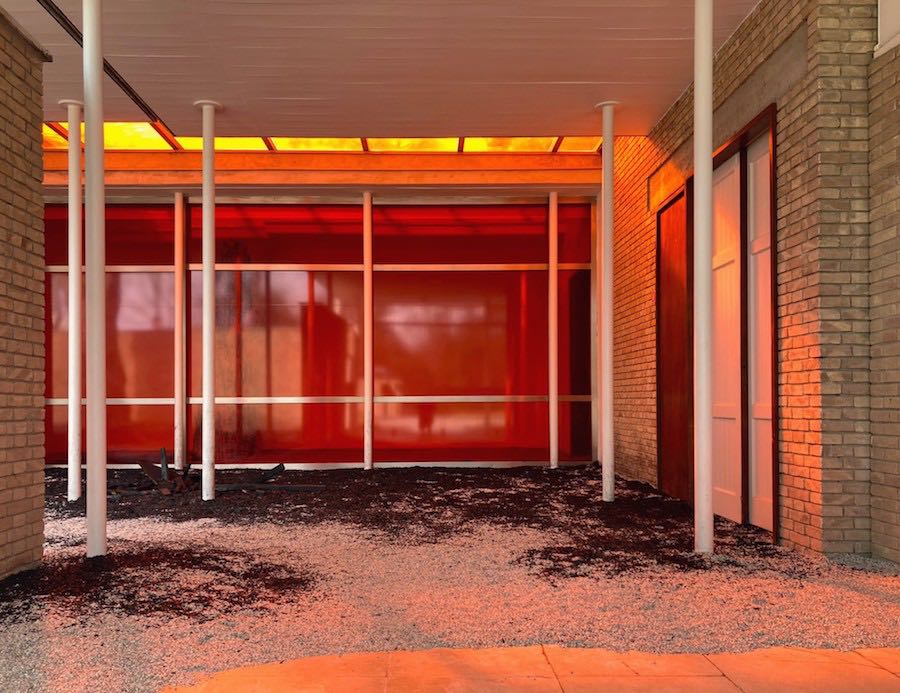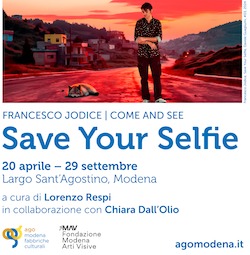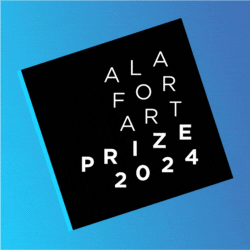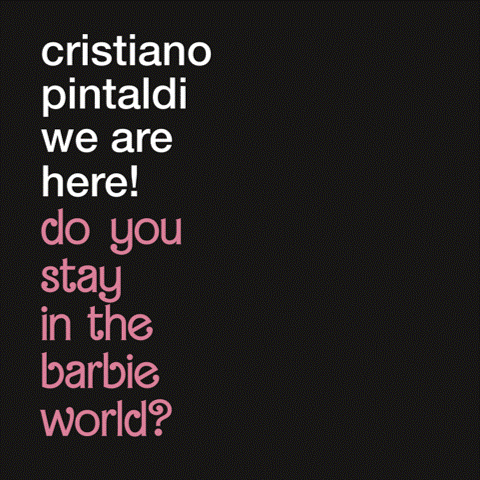
English version below —
Vedere, ascoltare e sopratutto sentore. Questa è l’esperienza che ci propone il Padiglione della Svizzera con il progetto The Concert concepito dall’artista Latifa Echakhch, in collaborazione con il percussionista e compositore Alexandre Babel e il curatore Francesco Stocchi.
Presentato come un viaggio a ritroso nel tempo, The Concert è un ampio progetto che ci guiderà nello spazio articolato del Padiglione Svizzero seguendo “il tempo che corre alla rovescia, dalla viva luce del giorno alla sera precedente.”
Latifa Echakhch intesse un dialogo con l’edificio progettato da Bruno Giacometti nel 1951. L’artista ha compiuto un approfondito studio del progetto architettonico per trasformare gli spazi a seconda del mutare della luce e seguendo i diversi suoni che diffondono gli stessi ambienti.
Suoni, luci cangianti, sculture: tutti gli elementi concorrono per un progetto univoco e immersivo. «Vogliamo che il pubblico lasci l’esposizione con la stessa sensazione di quando si esce da un concerto. Che senta l’eco di questo ritmo, di quei frammenti di memoria», afferma Latifa Echakhch. «Ogni volta, la Biennale offre un profluvio di eccellenza artistica. Un’onda che culmina in una magnificenza catartica per poi rifluire, lasciando un paesaggio deserto di edifici abbandonati». Latifa Echakhch solleva la questione se l’arte, similmente alla musica, inizia a esistere soltanto quando il silenzio e un senso di vuoto prendono il sopravvento.
Seguono alcune domande al compositore Alexandre Babel —
Elena Bordignon: E’ molto suggestivo il titolo scelto dell’artista per il Padiglione Svizzero: The Concert. Assistere ad un concerto è un’esperienza breve e intensa che solitamente riunisce molte persone nello stesso luogo per assistere ad una performance. Immagino che l’artista utilizzi il concetto del concerto come una metafora della vita. che significato hai dato tu a questo suggestivo titolo? Cosa è per te, che ti occupi di musica, un ‘concerto’?
Alexandre Babel: Un concerto è un incontro. È l’incontro tra uno spazio e un pubblico in un dato tempo. Al centro di questo incontro c’è una vibrazione. Questa vibrazione può essere vissuta tanto collettivamente quanto individualmente, è generata da impressioni uditive, visive e multisensoriali. Un concerto si svolge sempre in tre fasi: c’è un tempo di anticipazione, poi c’è il momento del concerto stesso, e infine il momento del “dopo”, che è un tempo trasformato dalle emozioni vissute. Il momento musicale continua ad esistere attraverso il ricordo di queste emozioni.

EB: Il Padiglione è presentato come un viaggio a ritroso nel tempo. Ci sono dei rituali o degli eventi a cui l’artista a tratto ispirazione? In particolare, l’artista fa riferimento al fuochi rituali presenti in molte culture.
AB: Il fuoco può essere visto come un oggetto di celebrazione, oltre che un vettore di distruzione. Quando c’è una distruzione, si viene a creare uno spazio dove si può costruire il futuro sulle ceneri del passato. Quando c’è una celebrazione, sono coinvolte vita, gioia e creazione.
Nel padiglione svizzero percepisco la presenza di questo ciclo del sentire attraverso la visita, più che l’evocazione di un rito specifico. Quindi il visitatore è invitato a viverlo con i propri sensi.
EB: Quale tipo di dialogo ha instaurato l’artista con l’edificio progettato da Bruno Giacometti nel 1951?
AB: L’edificio di Bruno Giacometti è stato progettato nel 1952 in modo formale e segmentato, ad ogni spazio è stata assegnata una specificità tecnica. Inoltre gli spazi si susseguono tra esterno, semiesterno e interno. Questa concezione suggerisce un corso, un percorso prestabilito. La mostra di Latifa Echakhch segue questo percorso, esplorando a fondo le caratteristiche architettoniche dell’edificio, come il filtraggio della luce del giorno e il progressivo isolamento dai suoni esterni. Questi effetti sono particolarmente evidenti nella progressione verso gli ambienti interni. Il pubblico è invitato a percorrere gli spazi seguendo un ordine preciso.
Incontreranno oggetti, vedranno e sentiranno cambiamenti nella luce e nei suoni ambientali. I visitatori potranno così vivere questa visita come un’unica entità, con una data struttura nel tempo e nello spazio: c’è un inizio, una parte centrale e una fine. In questo senso, la mostra è più di un susseguirsi di opere esposte in diverse sale. Diventa una esperienza unica.
EB: La musica, nel progetto dell’artista è molto importante. Sia come elemento reale che metaforico. Essendo tu anche un musicista, come motivi questo avvicinamento dell’artista alla musica?
AB: La musica è un’arte di condivisione e il suono è il suo vettore. Per questo motivo, molto tempo fa, io ho deciso di dedicare la mia vita interamente alla musica.
Nella genesi del progetto per il Padiglione Svizzero, Latifa Echakhch era interessata a capire come si sarebbe sviluppato il suo lavoro, se avesse optato per un approccio sonoro piuttosto che esclusivamente visivo. Si è quindi interessata profondamente alla questione musicale, approfondendo in modo appassionato le sue conoscenze teoriche e pratiche della musica.
Mi ha chiesto di lavorare con lei e il curatore Francesco Stocchi alla realizzazione di questo padiglione, per confrontarmi con i nostri rispettivi approcci creativi.
Credo che questo viaggio attraverso l’arte e il suono, che abbiamo condiviso negli ultimi due anni per preparare la mostra, debba essere visto come un’apertura, che sta dando vita alla mostra, e potrebbe probabilmente portare anche a ulteriori progetti che coinvolgono il suono.

Biennale 2022 | Swiss Pavilion: Latifa Echakhch – The Concert
For the Biennale Arte 2022, the Swiss Arts Council Pro Helvetia appointed artist Latifa Echakhch to represent Switzerland. In collaboration with percussionist and composer Alexandre Babel and curator Francesco Stocchi, artist Latifa Echakhch conceived and realized the exhibition titled The Concert .
The exhibition plays with harmonies and dissonances, with the mixed feelings of expectation, fulfilment and disappearance. The sculptures are part of an orchestrated and enveloping experience, a rhythmic and spatial proposal that allows viewers to experience a fuller perception of time and of their own body.
“We want visitors to leave the exhibition with the same feeling they have when they come out of a concert. That this rhythm, those fragments of memory, still echo,” says Latifa Echakhch. “The Biennale is an eruption of artistic greatness every time. A wave that culminates in a cathartic grandeur only to then recede, leaving a deserted landscape of abandoned buildings.”
Interview with the composer Alexandre Babel —
Elena Bordignon: The Concert is the title chosen by the artist for the Swiss Pavillon: it is evocative. Seeing a concert is a brief but intense experience that brings many people together in the same place for the same reason. I suppose the artist considers the concert as a metaphor for life. For you, what does this evocative title mean? What is a concert for you?
Alexandre Babel: A concert is an encounter. It is the meeting between a space and an audience in a given time. In the core of this encounter there is a vibration. This vibration can be experienced as much collectively as individually, it is generated by auditory, visual and multisensory impressions. A concert always takes place in three stages: there is a time of anticipation, then there is the moment of the concert itself, and finally the moment of the “after”, which is a time transformed by the emotions experienced. The musical moment continues to exist through the memory of these emotions.
EB: The Pavillon is set as a journey back in time. Are there any rituals or events that inspired the artist? For example, I think of the ritual fires to which the artist refers.
AB: Fire can be seen as an object of celebration, as well as a vector of destruction. When there is a destruction, there is space being made, where one can build the future on the ashes of the past. When there is a celebration, there is life, joy and creation involved. In the swiss pavillion, I see the presence of these cycles to be felt through the visit, more than the evocation of a specific ritual. Then the visitor is invited to experience it with his own senses.
EB: What kind of dialogue did the artist establish with the building, designed by Bruno Giacometti in 1951?
AB: Bruno Giacometti’s building was initially designed in 1952 in a formal and segmented manner, with each space being assigned a specific technique. Moreover, the spaces follow one another between exterior, semi-exterior and interior. This conception induces a course, a path. Latifa Echakhch’s exhibition follows this path, fully exploring the architectural attributes of the building, such as the filtering of daylight and the progressive isolation from outside sounds. These effects are particularly noticeable in the progression towards the interior rooms. The public is invited to walk through the spaces following a suggested order. They will encounter objects, and they will see and feel changes in the light and in the environmental sounds. Thus they will be able to experience this visit as a single entity, with a given structure in time and space: there is a beginning, a middle section, and an ending. In this sense, the exhibition is more than a succession of works exhibited in different rooms. It becomes one whole thing.
EB: Music plays a central role in artistic research. As a real and metaphorical element. You are a musician: how do you explain the artist’s interest in music?
AB: Music is an art of sharing, and sound is its vector. For this reason, I myself decided a long time ago to devote my life entirely to music. At the genesis of the project in Venice, Latifa Echakhch was interested in knowing how her work would develop, if she opted for a sound approach rather than an exclusively visual one. She therefore became deeply interested in the musical question, deepening her theoretical and practical knowledge of music in a passionate way. She asked me to work with her and curator Francesco Stocchi on the making of this pavilion, in order to confront our respective creative approaches. I believe this journey through art and sound that we have shared in the past two years to prepare the exhibition is to be seen as an opening, which is bringing the exhibition to life, and might probably also lead to further projects involving sound.












